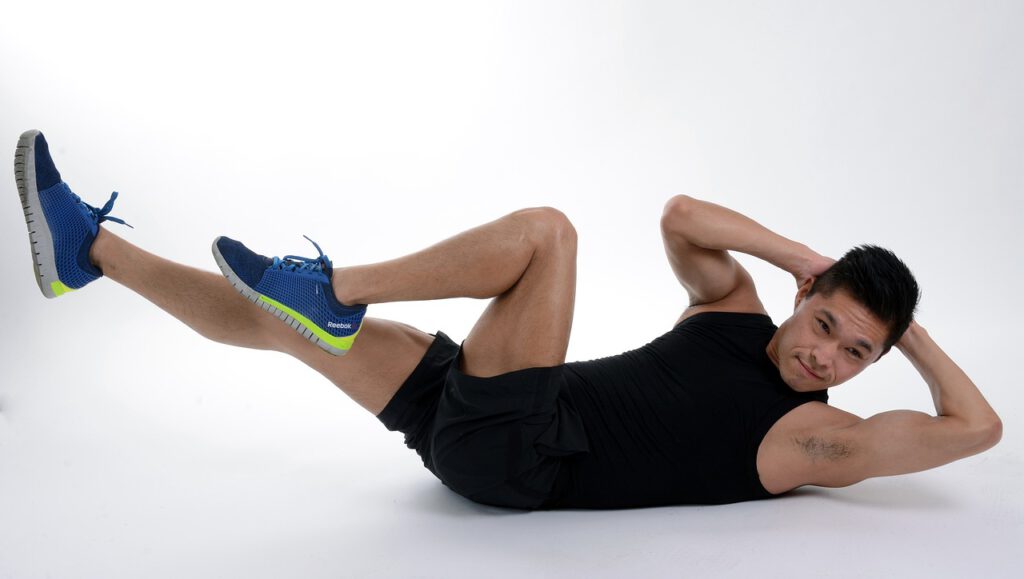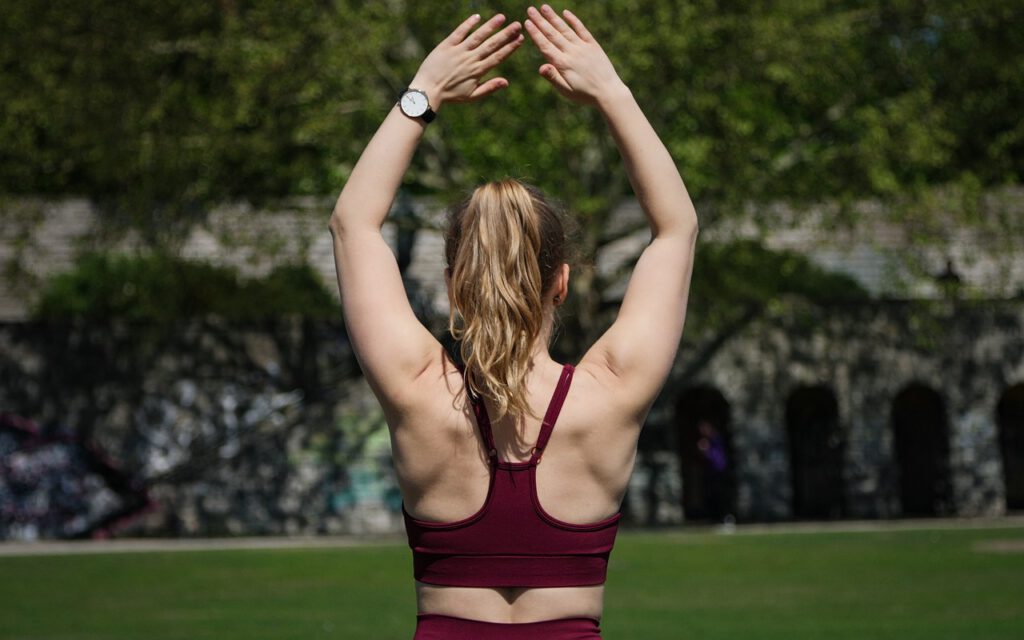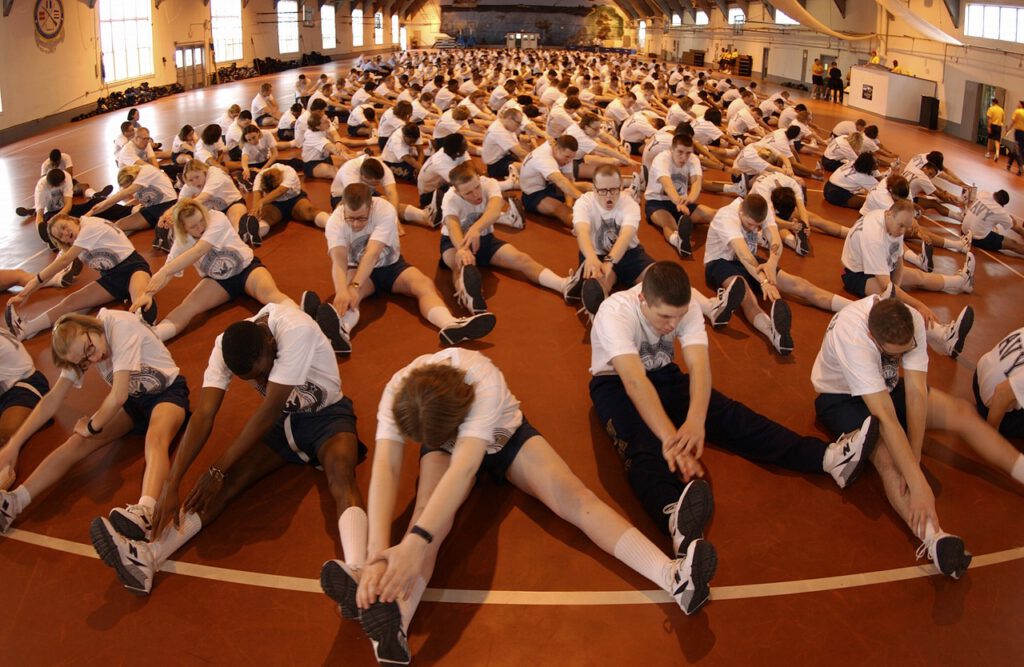
A “tale of two cities” is an apt description for the phenomenon of bilateral gynecomastia. This condition, which affects both male and female breasts, has been the subject of much debate in recent years. Bilateral gynecomastia can be a source of physical and emotional distress for those who suffer from it, so learning about its causes and treatments is essential for anyone affected by the condition.
In this article, we will discuss what bilateral gynecomastia is and explore the various options available to those seeking relief. We will also look at some of the current research surrounding this issue so that readers can make informed decisions about their health care choices.
1. What Is Bilateral Gynecomastia?
Bilateral gynecomastia is a condition that affects many men, but it’s not often talked about. It’s like a secret that men carry in silence. To put it simply, bilateral gynecomastia is the enlargement of both breasts in men due to hormonal imbalances.
It occurs in both adolescents and adults and can range from mild to severe. The appearance of the enlarged breasts can vary depending on the cause. In some cases, the breasts may be full and round while in other cases they may just appear as small mounds of firm tissue under each nipple.
No matter what the appearance, this condition can be emotionally debilitating for men who are already uncomfortable with their bodies and trying to figure out their place in society. Fortunately, there are treatments available that can help reduce or even eliminate the enlarged breast tissue.
2. Causes Of Bilateral Gynecomastia
Bilateral gynecomastia is a condition in which there is abnormal enlargement of the male breasts, typically caused by an imbalance in hormone levels. It’s not uncommon for men to experience some degree of breast enlargement, but if it persists and causes distress, it can be classified as a medical condition. So what are the root causes of bilateral gynecomastia?
The most common cause of bilateral gynecomastia is an imbalance between the hormones testosterone and estrogen. Testosterone is the primary hormone responsible for the development of male characteristics such as facial hair growth, while estrogen helps control breast tissue development. When testosterone levels decrease or estrogen levels increase, this can lead to male breast enlargement. Other possible causes include certain medications, diseases, metabolic disorders, heavy alcohol consumption, and even recreational drug use.
It’s important to note that although hormonal imbalances may be one cause of bilateral gynecomastia, it’s not always the case. For example, some men may develop enlarged breasts due to lifestyle factors such as obesity or excessive weight training without any underlying medical issues. In these cases, treatment generally involves addressing the underlying lifestyle factor and making changes to diet and exercise routines.
No matter what the cause may be for an individual case of bilateral gynecomastia, it’s always best to seek medical advice to determine an appropriate treatment plan. Next up: let’s take a look at the symptoms associated with this condition.
3. Symptoms Of Bilateral Gynecomastia
Bilateral gynecomastia is the enlargement of breasts in men, which is often caused by an imbalance of hormones. Symptoms of this condition can vary depending on the underlying cause, but they commonly include tenderness and swelling of the breast tissue. In some cases, the nipples may become hardened or even retract inwards.
In addition to these physical symptoms, many men with bilateral gynecomastia also report feeling embarrassed or ashamed of their appearance due to the condition. This can lead to social anxiety and depression. It’s important for those affected to be aware that there are treatment options available that can help reduce the physical and emotional impact of this condition.
The diagnosis of bilateral gynecomastia typically involves a physical examination and a review of any related medical history. In some cases, imaging tests such as an ultrasound or mammogram may be used to confirm the diagnosis or rule out other potential causes. With proper diagnosis, treatment can then be tailored to address both the physical and psychological effects of this condition. Moving forward with a diagnosis can help those affected live more comfortably with their condition.
4. Diagnosis Of Bilateral Gynecomastia
Diagnosing bilateral gynecomastia can be like solving a puzzle. In order to piece together the correct diagnosis, a doctor will need to carefully assess various components of a man’s health. Here are four things that are looked at when diagnosing this condition:
- Medical history – A doctor will ask about any past medical issues or surgeries, as well as anything that might have triggered the development of bilateral gynecomastia.
- Physical examination – The doctor will examine the chest area for any lumps or asymmetry, and check for any abnormalities in the breasts or nipples.
- Blood tests – Blood tests may be ordered if the doctor suspects an underlying hormonal imbalance or other medical issue is causing the condition.
- Imaging tests – An imaging test such as an ultrasound or mammogram may be ordered to further investigate what is causing the gynecomastia and determine whether it is caused by fatty tissue or glandular tissue.
By closely examining all of these different factors, a doctor can make an accurate diagnosis and determine which type of treatment will be most beneficial for a patient’s unique case of bilateral gynecomastia. With this knowledge in hand, it’s time to move on to considering treatment options for this condition.
5. Treatment Options For Bilateral Gynecomastia
Treatment options for bilateral gynecomastia can vary depending on the cause. In some cases, treatments may not be necessary. For instance, if the condition is caused by puberty or a medication, it may disappear on its own. However, if the cause is more serious, such as an underlying medical condition or excessive hormone production, then medical treatment is necessary.
The most common treatments for bilateral gynecomastia are medications and surgery. Medications used to treat this condition include anti-estrogens and aromatase inhibitors that help reduce levels of estrogen in the body and block testosterone from being converted into estrogen. Surgery involves removing breast tissue and/or fat from the chest area to improve the appearance of the breasts.
No matter what treatment option is chosen, there are risks associated with it. It’s important to discuss these risks with your doctor before making a decision about how to proceed with treatment. This will ensure that you are informed about all possible outcomes and can make an informed decision about what’s best for your health. Moving forward, we’ll take a look at the risks and complications associated with bilateral gynecomastia treatment.
6. Risks And Complications Of Bilateral Gynecomastia
While it may be tempting to think of bilateral gynecomastia as a minor medical issue, it can still carry certain risks and complications. It’s important to be aware of these so that you can take the necessary steps to minimize any potential issues. Let’s take a look at the potential risks and complications associated with bilateral gynecomastia.
The most common complication of this condition is pain and discomfort from the swollen breasts, particularly if there is any associated infection or inflammation. It’s also possible for scarring to occur after surgery, which could cause restricted movement in the chest area. Additionally, some patients may experience an uneven breast shape after their procedure due to asymmetry or other factors.
There’s also the risk of psychological issues that result from having gynecomastia. This could include feelings of embarrassment, anxiety, and depression over the appearance of their chest area. Fortunately, there are plenty of support resources available to help with these concerns.
Now that we’ve discussed what can go wrong with treatment for bilateral gynecomastia, let’s move on to explore how exercise and diet can help manage this condition on a daily basis.
7. Exercise And Diet Tips For Bilateral Gynecomastia
Imagine a man, standing in front of a mirror, looking at his reflection and wondering why his chest looks so strange. He’s suffering from bilateral gynecomastia, an enlargement of the breast tissue that can be embarrassing and uncomfortable. Exercise and diet are two powerful tools that can help him reduce this unwanted condition.
Gynecomastia is caused by an imbalance of hormones, but exercise can help correct this balance. Cardiovascular activities like running or cycling increase blood flow to the muscles, which helps create a leaner physique. Strength-training exercises will also help strengthen the chest muscles, reducing the prominence of gynecomastia.
Diet plays an important role too. Eating more vegetables and fewer processed foods will lower estrogen levels, which can reduce breast tissue size and improve overall health. Healthy fats found in avocados, nuts and fatty fish such as salmon will also help keep hormone levels balanced while providing essential nutrients for muscle growth and repair.
By incorporating exercise and healthy eating habits into their daily routine, men with bilateral gynecomastia can look forward to reduced symptoms over time – without having to rely on medication to do so.
8. Medication For Bilateral Gynecomastia
It’s true that medication for bilateral gynecomastia can help reduce the symptoms of enlarged breasts, but it’s important to understand that none of these medications are a cure-all solution. Here are just three of the major considerations to keep in mind when considering medical treatment: 1) Understand the side effects. Certain medications may come with unpleasant or even dangerous side effects that could be worse than having enlarged breasts. 2) Speak to your doctor before taking any medication. Some medications require a prescription and should not be taken without professional guidance. 3) Consider natural remedies first. Before you pursue any type of medication, make sure you’ve tried lifestyle changes and natural remedies first as they could be more effective than taking a pill.
That said, there are certain types of medication that may be prescribed for those who suffer from gynecomastia. These include antiestrogens such as tamoxifen and selective estrogen receptor modulators (SERMs), which help block estrogen receptors in breast tissue and so reduce breast enlargement. Other medications such as aromatase inhibitors work by reducing the amount of estrogen produced by the body and so can also reduce breast size.
However, it is vital to remember that all medications come with risks and benefits, so it is essential to discuss treatment options with a qualified physician before making any decisions about medication for bilateral gynecomastia. With an understanding of both natural remedies and medical treatments, you can make an informed decision about how best to manage your condition going forward. Moving on from here, let’s explore some natural remedies for bilateral gynecomastia that might provide relief without resorting to drugs or surgery.
9. Natural Remedies For Bilateral Gynecomastia
When it comes to treating bilateral gynecomastia, there are two main approaches: medication and natural remedies. Both offer their own unique set of benefits and drawbacks, so it’s important to understand the differences between them. On one hand, medication can provide quick relief, but it may also come with side effects. On the other hand, natural remedies involve more effort and time but don’t typically produce any unwanted results.
Natural remedies for bilateral gynecomastia involve lifestyle changes such as weight loss and avoiding certain foods. Eating a balanced diet rich in fruits, vegetables and lean proteins is essential for reducing estrogen levels in men with gynecomastia. Increasing physical activity can also help to reduce fat deposits in the chest area. Additionally, certain herbal supplements such as saw palmetto or green tea extract may help to reduce inflammation associated with gynecomastia.
Though natural remedies require more effort than medication, many people prefer them because they don’t have any potential side effects or risks like medications do. Furthermore, natural remedies often have long-lasting results that can improve overall health and wellbeing beyond just reducing breast size in men with gynecomastia. With that said, the best approach for treating bilateral gynecomastia will vary from person to person depending on individual needs and preferences. As a result, it’s important to consult a doctor before deciding which route to take when treating this condition. With proper treatment and management, most cases of bilateral gynecomastia can be effectively managed over time.
10. Prognosis Of Bilateral Gynecomastia
The prognosis of bilateral gynecomastia may seem like a joke – many people would be surprised to learn that it even has one. But, in reality, there are several factors that affect how successful treatment is likely to be. Surprisingly enough, the outlook for this condition isn’t all doom and gloom:
To make your prognosis more manageable, here are a few things to keep in mind:
1. Take care of yourself – stay active and eat right.
2. Follow your doctor’s orders – if they recommend surgery or medications, make sure to follow their instructions carefully.
3. Be aware of potential side effects – some treatments can cause permanent damage if not done correctly or monitored closely by a physician.
4. Seek out support – there are many online forums and support groups dedicated to helping people with bilateral gynecomastia cope with the condition.
No matter what your prognosis looks like, it’s important to remain positive and take good care of yourself. While there is no cure for bilateral gynecomastia, taking steps towards managing the symptoms can help you lead a healthier life overall. With the right approach and the support from family and friends, you can continue living life as normal despite having this condition.
Frequently Asked Questions
Who Is Most Likely To Develop Bilateral Gynecomastia?
One might assume that only men are likely to develop bilateral gynecomastia, but the truth is that anyone can be affected by this condition. While it is true that gynecomastia is more common among males, ladies can also experience the same symptoms and signs as men. In fact, even young boys and girls may suffer from this condition.
It’s important to note that certain lifestyle factors can increase the risk of developing bilateral gynecomastia. For instance, some medications such as anabolic steroids or estrogen-containing drugs can cause the enlargement of breast tissue in both sexes. Additionally, conditions like obesity and liver disease may result in abnormal hormone levels which can lead to gynecomastia.
The most frequent cases of bilateral gynecomastia occur during puberty when hormones are changing rapidly and imbalance between testosterone and estrogen occurs naturally. Therefore, adolescents are especially vulnerable to developing this condition due to their body’s natural hormonal changes. Nonetheless, individuals of all ages should be aware of the potential risks associated with these lifestyle factors and seek medical advice if they experience any worrying symptoms related to gynecomastia.
What Lifestyle Changes Can I Make To Reduce My Risk Of Developing Bilateral Gynecomastia?
Do you want to reduce your risk of developing bilateral gynecomastia? If so, there are certain lifestyle changes that you can make. This article will explain what they are, as well as how they can help.
First and foremost, it is important to maintain a healthy diet. Eating foods that are low in fat and high in protein can help reduce the risk of developing breast enlargement in men. Additionally, avoiding processed and sugary foods is recommended for those wishing to reduce their risk of bilateral gynecomastia. Here are some tips to get started:
• Eat more whole grains, fruits, and vegetables
• Avoid unhealthy fats such as trans fats and saturated fats
• Choose lean sources of protein like fish or chicken
• Limit your intake of sugar and processed foods
In addition to eating a balanced diet, regular exercise can also reduce the risk of developing bilateral gynecomastia. Aim for at least 30 minutes of moderate physical activity on most days of the week. This could include anything from jogging or swimming to playing sports or lifting weights. Exercise helps to keep hormones balanced and prevent excess fat from accumulating around the chest area. Furthermore, it boosts metabolism which helps burn calories faster and more efficiently.
Finally, reducing stress levels is another important factor when it comes to reducing one’s risk of developing bilateral gynecomastia. Stress can cause hormonal imbalances which may contribute to breast enlargement in men. To reduce stress levels try practicing yoga or meditation regularly or engaging in activities that you find relaxing such as painting or gardening. It is also important to get enough restful sleep each night; aim for 7-8 hours per night if possible. These lifestyle changes can help you stay healthy and reduce your risk of developing bilateral gynecomastia significantly!
What Is The Cost Of Treatment For Bilateral Gynecomastia?
As the saying goes, ‘prevention is better than cure’. This certainly applies when it comes to bilateral gynecomastia, a common condition in adolescent males which causes an abnormal enlargement of breast tissue. So what is the cost of treating this condition?
Treatment for bilateral gynecomastia can vary depending on the severity and cause of the condition. Generally, it involves:
- Surgery to remove excess breast tissue
- Hormonal therapy or medication
- Liposuction or laser treatment
Surgery typically costs between $3,000 and $8,000 depending on where you live and the type of anesthesia used. A consultation with a medical professional is usually necessary before any treatment begins, and this will also be factored into the overall cost. Additional costs may include tests such as mammograms, ultrasounds and biopsies.
Hormonal therapy or medication may also be recommended if there’s an underlying hormone imbalance causing the gynecomastia. The cost of these treatments varies depending on your insurance coverage and the medications that are prescribed. Similarly, liposuction or laser treatments carry their own costs which will again depend on factors like location and type of procedure.
Taking all these costs into consideration can help you make an informed decision about whether or not to seek treatment for bilateral gynecomastia. It is important to remember that early diagnosis and treatment can greatly reduce its severity over time.
Are There Any Long-Term Effects Of Bilateral Gynecomastia?
Bilateral gynecomastia is a condition that affects many men and can have a lasting impact on their physical and emotional wellbeing. But what are the long-term effects of this condition? How far-reaching are they?
The short-term effects of bilateral gynecomastia include physical discomfort, especially in areas where there is an accumulation of fat. There may also be psychological distress, such as low self-esteem or body image issues. In some cases, these symptoms can persist for years after treatment has been completed.
In addition to lingering physical and psychological symptoms, there is also the potential risk of infection if the area becomes infected following surgery. Some men may also experience hormone imbalances as a result of the hormonal changes associated with this condition. It is important to be aware that these risks exist when considering treatment options for bilateral gynecomastia.
Therefore, it’s essential to discuss all potential risks with a doctor before undergoing any sort of treatment for this condition. By doing so, men can be better informed when making decisions about their care and feel more confident in their choices.
Are There Any Other Ways To Treat Bilateral Gynecomastia Besides Surgery?
John wasn’t expecting to find out he had bilateral gynecomastia. It had been affecting him for years, but he hadn’t known the cause until recently. He was concerned about what could be done to treat it, and if there were any long-term effects. He soon found out that surgery was a common option for treatment, but he wanted to know if there were any other ways to address his condition.
The good news is that there are several alternatives to surgery for treating bilateral gynecomastia. For example, hormone therapy can help balance hormones within the body and reduce the size of male breasts. Other options include compression garments or medications that target breast tissue growth or fat deposits in the chest area. Many of these treatments can be used alone or in combination with each other depending on individual cases.
In addition, lifestyle changes such as diet and exercise can help manage the condition by reducing overall body fat and promoting healthy muscle growth in the chest area. These strategies can be used along with medical treatments in order to get optimal results when treating bilateral gynecomastia.
It’s important for anyone considering treatment options for bilateral gynecomastia to talk to their healthcare provider about which approach is best suited for their individual situation and needs. With the right guidance and support, John (and others like him) can develop an effective plan for managing their condition without having to resort to surgery.
Conclusion
Bilateral gynecomastia is a condition that affects many men. It can be caused by a variety of factors, including genetics, hormones and lifestyle choices. While the condition can be treated with surgery, it’s important to understand that there are other options available. Making healthy lifestyle changes can help reduce the risk of developing bilateral gynecomastia or slow its progression in those who have already developed it. Treatment costs can vary depending on the severity of the condition and type of treatment chosen, but understanding all available options is key for finding the best solution for each individual case.
In conclusion, bilateral gynecomastia is a complex condition that requires careful consideration when deciding on a course of action. As with any medical issue, getting informed about all available treatments and making sure to discuss them with a qualified practitioner is essential in order to make an informed decision on how to proceed. As the saying goes “knowledge is power” – so arm yourself with knowledge and make the best choice for your body.



